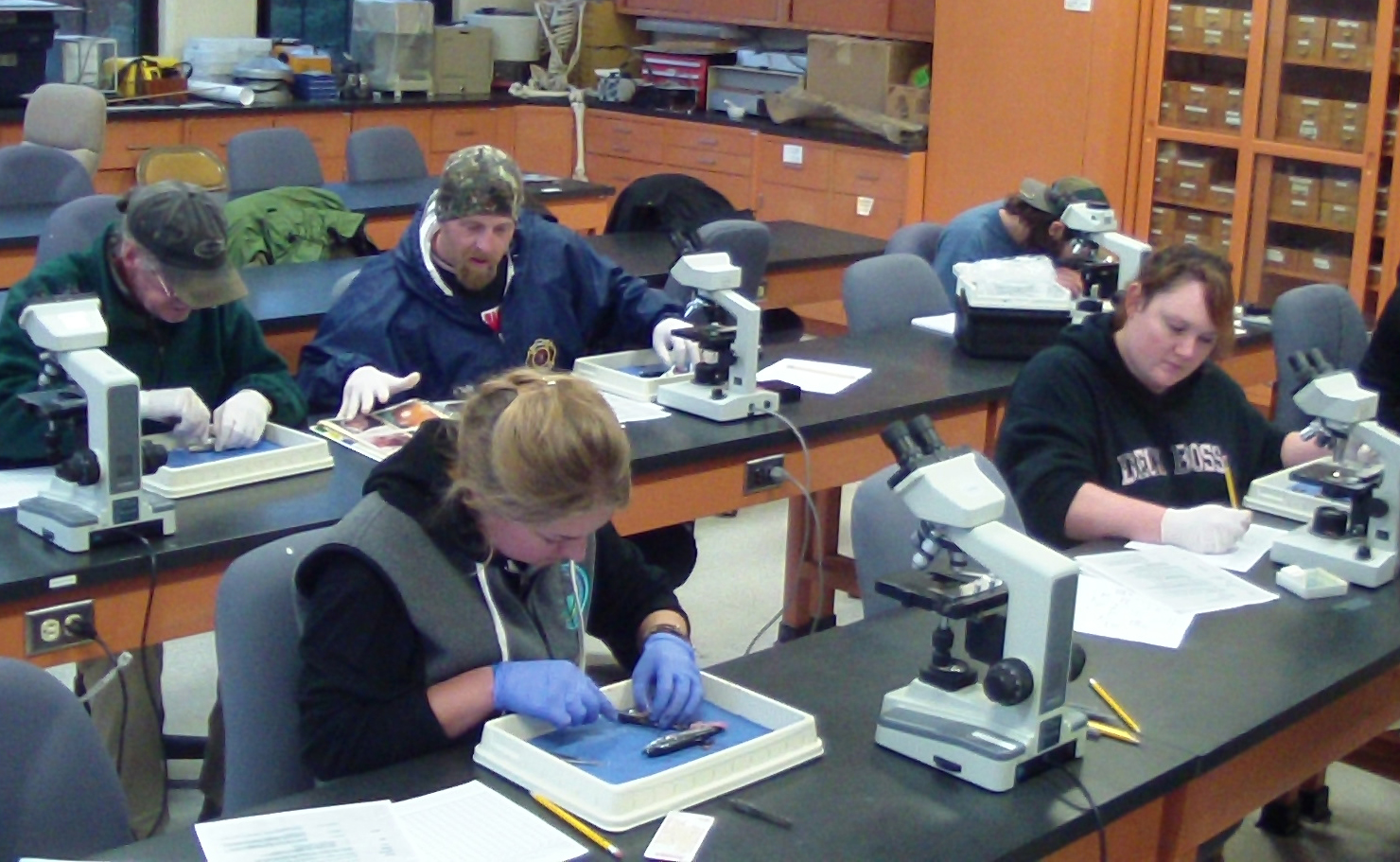This semester the UAS Sitka Fisheries Technology program offered three separate fish pathology labs – in Homer, Sitka and Ketchikan. Each had its own emphasis based upon local resources. While the classes were a success based upon student comments, there was also tremendous value in the collaborative relationships that were fostered. The Fish Tech program strives to work closely with fisheries industry partners to provide instruction that is relevant for their current and future employees.
In Homer, Jim Seeland and Joel Markis offered labs as continuing education workshops at the Alaska Chapter of the American Fisheries Society’s annual meeting.
 In Sitka, Fish Tech faculty worked with UAS Sitka Biology faculty as well as the staff at the Sitka Sound Science Center and the Medvejie Salmon Hatchery. UAS Sitka faculty and staff were generous in sharing their time and expertise with the students. We were privileged to have Dr. Paul Bahna present on basic microscopy methods and lab techniques. Kitty LaBounty provided the students with an understanding of the polymerase chain reaction process, which is commonly used in the fish pathology process. Wes Schaeffer provided necessary equipment and supplies for the lab. Angie Bowers, manager of the Sheldon Jackson Hatchery, spent time with the students sharing her experiences and had equipment available for us when we arrived. Being able to visit a hatchery and lab on the same site represented a “real world” element to the lab class which is necessary. The visit to the Medvejie Salmon Hatchery exposed students to a large-scale salmon production facility. The hatchery has a small lab that we were able to utilize. More importantly, we had the company of Bill Coltharp a fish culturist at the hatchery who had a wealth of experiences to share.
In Sitka, Fish Tech faculty worked with UAS Sitka Biology faculty as well as the staff at the Sitka Sound Science Center and the Medvejie Salmon Hatchery. UAS Sitka faculty and staff were generous in sharing their time and expertise with the students. We were privileged to have Dr. Paul Bahna present on basic microscopy methods and lab techniques. Kitty LaBounty provided the students with an understanding of the polymerase chain reaction process, which is commonly used in the fish pathology process. Wes Schaeffer provided necessary equipment and supplies for the lab. Angie Bowers, manager of the Sheldon Jackson Hatchery, spent time with the students sharing her experiences and had equipment available for us when we arrived. Being able to visit a hatchery and lab on the same site represented a “real world” element to the lab class which is necessary. The visit to the Medvejie Salmon Hatchery exposed students to a large-scale salmon production facility. The hatchery has a small lab that we were able to utilize. More importantly, we had the company of Bill Coltharp a fish culturist at the hatchery who had a wealth of experiences to share.
 In Ketchikan we utilized the Deer Mountain Hatchery site which was recently acquired by Southern SE Regional Aquaculture Association (SSRAA). We were also fortunate enough to work in SSRAA’s Whitman Lake Hatchery to perform adult salmon sampling. Finally, UAS Ketchikan campus allowed us to use lab facilities to demonstrate basic microscopy and other lab techniques.
In Ketchikan we utilized the Deer Mountain Hatchery site which was recently acquired by Southern SE Regional Aquaculture Association (SSRAA). We were also fortunate enough to work in SSRAA’s Whitman Lake Hatchery to perform adult salmon sampling. Finally, UAS Ketchikan campus allowed us to use lab facilities to demonstrate basic microscopy and other lab techniques.
The labs provided instruction but also allowed students to interact with their peers as well as fisheries professionals. At every location, staff were very generous with their time and their professionalism influenced the students. Alaska is currently experiencing a shortage of fisheries technicians and fisheries biologists – a trend predicted to continue for at least the next 10 years. If you are interested in learning more about a career in Fisheries Technology contact the Fish Tech faculty. They are available to discuss job availability, career paths, or educational next steps.
The UAS Fisheries Technology Pathway to Employment Project is 100% funded through a $2,507,463 U.S. Department of Labor, Employment and Training Administration, Trade Adjustment Assistance Community College and Career Training Grant. UAS is an AA/EO employer and educational institution.
